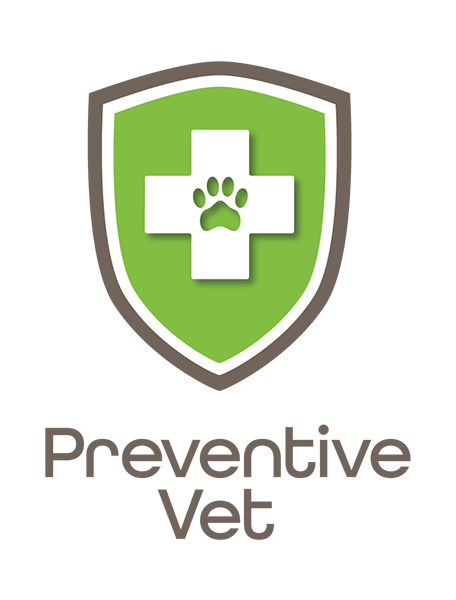- en
When your best friend is nearing the end of their life, you want to do everything you can to keep them comfortable. This time can be so difficult, and we feel your pain. We know you want to honor the role your dog has played in your life and improve the quality of their last days with you. In addition to all the love you'll be giving your dog, we hope this information will help them feel the best they can.
Quick Links

Knowing your dog is nearing the end of their life is an emotional time, and often we find ourselves grieving before our dog is actually gone. It’s okay to be sad, angry, or feel lost, but try to avoid completely detaching yourself from the situation in your grief.
Share your sadness with your dog, nestle your nose in their fur, and let them lick away your tears, but allow yourself to still experience all the moments of joy they bring you during their remaining time with you.
Our mission is to help save dogs' and cats’ lives through our educational content. To support our efforts, this page may contain affiliate links. We earn a commission for qualifying purchases – at no cost to you.
Palliative care is sometimes called hospice care or end-of-life care. The World Health Organization’s definition is:
"Palliative care is the active total care of patients with a life-limiting illness that is not responsive to curative treatment. Control of pain, of other symptoms, and of psychological, social and spiritual problems, is paramount. The goal of palliative care is achievement of the best quality of life for patients and their families."
Essentially, it involves the overall care — medical and emotional — we can provide dogs with conditions that we can’t cure or treat and go on as long as needed, for days, months, and sometimes even years. It also recognizes the impact on human family members and promotes care sensitive to their needs and wishes. Palliative care almost always includes pain management medications but can also include:
While it’s often heartbreaking to think about our dog’s illness or advanced age, palliative care gives you options to keep your pet comfortable in their final days.
Often, palliative care is provided for:
Follow your veterinarian’s instructions on giving medication (if prescribed), diet, environment changes, and activity level. It’s important to talk to your veterinarian and your family about your dog’s disease, how it's expected to progress, and the best ways to assess your dog’s quality of life. In addition, you may want to consider working with a veterinarian who has Animal Hospice and Palliative Care certification. The International Association for Animal Hospice and Palliative Care (IAAHPC) provides a provider search on their website.
You may find it helpful to keep track of your dog’s activity, appetite, and overall comfort each day so that you can quickly notice if their condition, mood, or quality of life is declining.
Since quality of life can vary with each individual pet, there are numerous factors to consider, and they are different for each pet and their family. There is a series of tools that can be used to help you sort through these factors and assess your pet’s quality of life. The following tools can be used together or independently to help you with this process:
If your dog is taking multiple medications, a pill dispenser can come in handy. Be sure to keep medication out of reach of your pup and any children in your home.
Because your dog doesn’t feel well, you may want to provide them a quieter, safer area of your home (away from small children and other pets). And if you have small children at home, communicate with them that their "pup" isn't able to play the same as they used to, and to give them their space and peace and quiet. Ensure their spot is a comfortable place with their favorite bed, and their food and water close by – avoid making them go up and down stairs if you can. You may even want to provide a disposable potty pad on the floor in case of an accident (but not if they’re the kind of dog who would try to chew on it or eat it!).
Be sure to clean their food and water bowls to remove any lingering smells, gunk, or bacteria. You’ll likely need to take your dog out to the bathroom more frequently, so budget in some more potty breaks to help avoid any urgent accidents.
Of course, one of the best things you can give your dog during this time is your love and attention. Dogs have a keen sense of how their human is feeling. They won’t understand why you might seem more distant than usual because dogs live in the moment. You shouldn't make their lives about being sick, because they aren't making their lives about being sick. Carry on with play, enrichment, and new things just like you would if they were well. Have gentle play sessions if your dog has the energy for it. Provide physical touch, such as gentle petting or massage if your dog enjoys these. Talk to your dog and be present in the moment with them.

Your dog should be more comfortable within a few days of starting palliative care, particularly for pain management. While it can be common for dogs to be sleepier when on pain medications, this can be a temporary adjustment period. Your dog should be eating, drinking, going to the bathroom normally, and more receptive to petting and attention. They may be able to move with greater mobility, particularly after the first several days.
The quality of life tools listed above will help you assess when things are getting worse. In general, if your dog is not eating or drinking, having difficulty standing, not able to use the bathroom, or if they are vomiting or having diarrhea, reach out to your veterinarian to make them aware of these signs. It is possible that medication adjustments can be made or other therapy recommended to help your dog be more comfortable.
Unfortunately, eventually, all palliative care options are not enough. You and your family may need to make some decisions about your dog’s quality of life and ending their suffering with humane euthanasia. If you haven’t had to make this decision before, ask your veterinarian to explain the process and discuss the options available so that you can be prepared when the time comes.
In this video, Dr. McVety shares how to assess quality of life, what to look for, what to consider, and what you can do in this difficult time.
The Pet InfoRx® is made possible, in part, through our partnership with AlignCare®.


© Preventive Vet. All rights reserved. PreventiveVet.com
